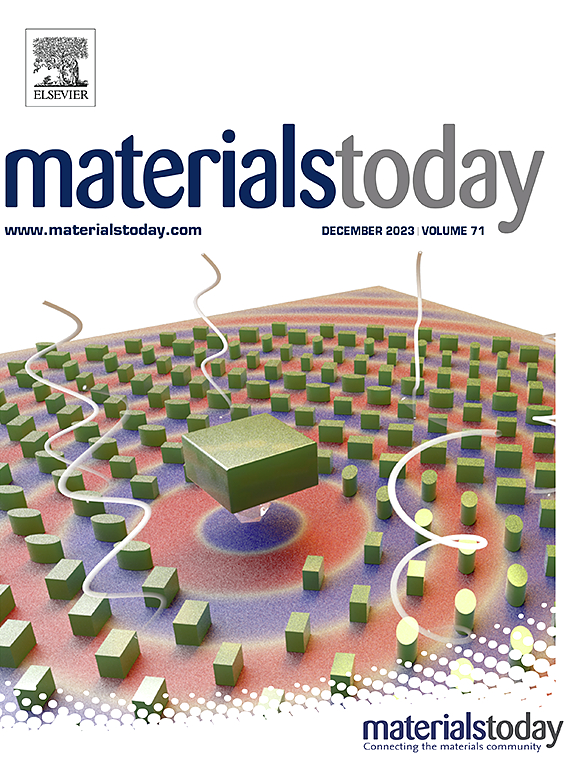Microenvironmentally enhanced supramolecular hydrogels reverse multiple dilemmas in bone infection
IF 21.1
1区 材料科学
Q1 MATERIALS SCIENCE, MULTIDISCIPLINARY
引用次数: 0
Abstract
The increasing incidence of osteomyelitis and the emergence of drug-resistant bacteria due to antibiotic misuse pose significant challenges to traditional treatments. The formation of biofilms through bacterial proliferation and intracellular infections perpetuates recurrent and prolonged infections. Concurrently, the immune response triggered by bacterial infection disrupts the intrinsic bone metabolism balance, leading to inflammatory osteolysis. Herein, a cerium-alendronate supramolecular hydrogel (CAG) with multiple antimicrobial capabilities and bone metabolism regulation ability was developed to address the multifaceted challenges of osteomyelitis. Injectable and self-healing CAG demonstrated heightened antibacterial efficacy against Staphylococcus aureus (S.A) and Escherichia coli (EcN) in response to the ROS microenvironment, effectively disrupting biofilms and eradicating intracellular infection. Ce ions within CAG destroyed bacterial membrane and disrupted the bacterial membrane potential, thereby impeding bacterial energy production. Moreover, CAG successfully reversed endotoxin-induced apoptosis and aberrant osteogenic differentiation of osteoblasts. RNA sequencing revealed that CAG promoted osteogenic differentiation by facilitating calcium influx, upregulating the calcium signaling pathway and TGFβ pathway, and enhancing the expression of Bmp2/Smad5 pathway-related proteins. In vivo experiments demonstrated the efficacy of CAG in treating S.A-induced osteomyelitis and improving bone tissue generation in both 7-day and 28-day osteomyelitis mice. Overall, this study proposed a comprehensive therapy targeting whole-stage bacterial infections and restoring the balance of bone metabolism, highlighting a novel approach to the treatment of infectious bone injuries.

求助全文
约1分钟内获得全文
求助全文
来源期刊

Materials Today
工程技术-材料科学:综合
CiteScore
36.30
自引率
1.20%
发文量
237
审稿时长
23 days
期刊介绍:
Materials Today is the leading journal in the Materials Today family, focusing on the latest and most impactful work in the materials science community. With a reputation for excellence in news and reviews, the journal has now expanded its coverage to include original research and aims to be at the forefront of the field.
We welcome comprehensive articles, short communications, and review articles from established leaders in the rapidly evolving fields of materials science and related disciplines. We strive to provide authors with rigorous peer review, fast publication, and maximum exposure for their work. While we only accept the most significant manuscripts, our speedy evaluation process ensures that there are no unnecessary publication delays.
 求助内容:
求助内容: 应助结果提醒方式:
应助结果提醒方式:


